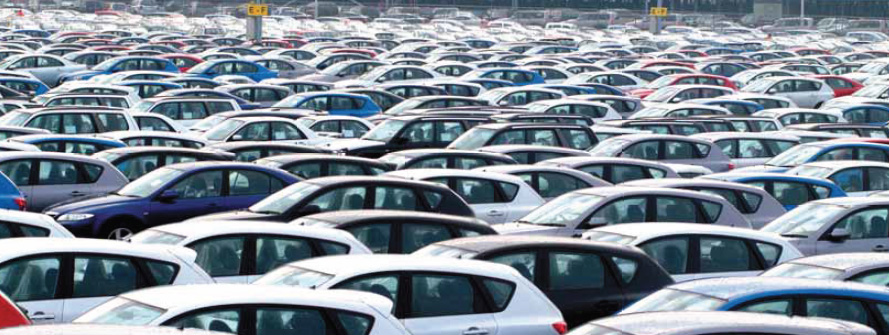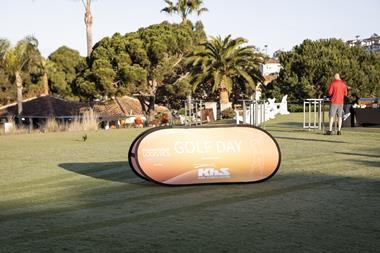
IT systems, whether hardware or software, are beginning to be more sophisticated for managing flows in and out of vehicle yards. Jim Romeo reports
While the automotive inbound and outbound supply chain has become more complex, the IT systems used to track the movement of vehicles have not always kept up.
“Processing finished vehicles has been a very manual, labour intensive process in the past ten years,” says Matthew Seltz, a director at Zebra Enterprise Solutions. According to Seltz, most vehicles are processed using barcode scans, with the event information stored and displayed locally at each point in the supply chain. Even today it is not uncommon to find many vehicle yards using Excel spreadsheets to manage the movement of vehicles. In recent years there has been much talk of a move to RFID for realtime location of vehicles, particularly as this application has tended to find more mileage in yard management in factories or distribution centres than the wider outbound supply chain. But regardless of whether the system is RFID or not, vehicle yards have been adapting more sophisticated IT. Richard Kiley, group vice president, automotive for American railway company Norfolk Southern says that the IT infrastructure at his company has evolved from supporting plant-to-ramp carload movements to include more robust functionality. “Algorithms within the software optimise placement of vehicles in load bays for haulaway and build ‘load lines’ for outbound railcar movement,” he says. “A complete view of multiple waybills associated with the movement is maintained at the VIN level for electronic data interchange [EDI] transmission to participants in the supply chain.”
Specialised software on the rise
Steve Jones, group managing director of the UK-based company Vehnet believes there have been several important developments over the last decade with IT systems used for yard management. “It’s a very mixed picture,” says Jones. “In-house systems are favoured by OEMs with occasional specialised programmes bought in. LSPs large and small have also favoured in-house developed systems or general logistics and transportation software which they have had tweaked.”
Vehnet’s iTrack product was first used with CAT UK in November 2003, and has given way to more specialisation tailored toward the vehicle industry niche, which Jones sees as a trend. “There is greater interest in purchasing from sector specialists,” he says. “This is due to budget forces, the availability of proven solutions and a softening towards [application service provider] ASP or hosted solutions.” Jones contends that home-grown software and tracking solutions will soon be displaced by specialised software that ultimately has a lower total cost of ownership and a much greater return on investment. He believes the time has come for extremely low-cost software based around global standard processes and data formats.
“Those standard processes and interfaces could make a massive difference to the cost of IT, and because IS&T [information systems and technology] cost in this low margin market is a barrier to take-up, I feel if we can reduce costs we will see the pendulum move to specialist software such as our iTracks product and away from in-house or custom developed solutions,” says Jones.
Vehnet has used the ‘free software’ model for the past five years and places much credence in it. Vehnet charges a flat monthly fee, however upgrades, enhancements, and customer Grooming the yard
IT systems, whether hardware or software, are beginning to be more sophisticated for managing flows in and out of vehicle yards. Jim Romeo reports support are all free, with no limit on user seats. “The model fits very well in an industry which only earns revenue based on [the] number of vehicles handled,” Jones says. “This method puts IT in the same thought process as other expenses, and it is capped. The availability of a reliable internet connection is now far more widespread throughout the world, and that access is cheap, so we are at the verge of a real cost-shift downwards.”
Jones believes the cost of bandwidth, storage and processing power will drop by as much as 50% every 18 months.
Tagging to track
At least one example of where RFID has been put into application for yard management is with California-based AeroScout. Amir Ben-Assa, industry solutions director for the company, says that tracking begins at the vehicle receiving stage when hundreds of cars arrive at a facility and admission processes need to be rapidly executed to allow a fast process of fitting the RFID tag in the car and using a PDA to scan the car’s VIN on the window label.
Ben-Assay believes that functionality is important to such technology. The user interface should be intuitive to allow operators to quickly run searches and view results on the site map without the need for training. The information should also be accessible from any Web browser on a PC, laptop or handheld device, while able to provide accurate inventory reports periodically or on-demand to free up operators’ time and avoid human errors. Finally, the same system should be able to provide immediate alerts for gate in and gate out events for vehicles going through various installation or service steps.
Increasing productivity
IT technology is expensive, but the expected return on investment for yard management can be worth the outlay. Matthew Seltz of Zebra cites several examples where such investments have already provided a return. After Jaguar Land Rover successfully implemented Zebra Enterprise Solution’s Vehicle Tracking and Management Solution (VTMS) at its Solihull, England, production facility, it went live with its third RFID solution, Scrap Tracking and Management, to streamline and automate nonconforming material processes. According to Seltz, JLR estimated a decrease in emergency shipping of 5-10%, and expected to see a 100% return on investment in one year.
Ben-Assa of AeroScout has seen tagging solutions provide returns further down the supply chain at dealer sales lots. An example is Arnold Clark Automobiles, an auto dealership. Here, a car that arrives on the sales lot is affixed with an AeroScout WiFi Tag and its specifications are entered into the inventory management system within one hour, versus the one-to-three days that the old process required. When Arnold Clark sales staff enters customer requirements into the inventory management system the AeroScout solution instantly locates the relevant cars, including those brought to the dealership for maintenance or repair. “Initial results show an increase of 3% more cars serviced each week and a time saving of ten minutes per associate, per car serviced,” says Ben-Assa.
Vehnet’s Jones recalls a vehicle-processing centre that handled about 120,000 vehicles a year. Before iTracks there were eight full-time employees involved in the process, while after implementation it needed only two: one for monitoring and one as a backup for holiday and absence cover. The company who operated the processing centre attribute their success to how iTracks automated literally hundreds of administrative steps and made information available in realtime for management control and decisions.
The road ahead
Norfolk Southern posits that new information technology is a necessary ingredient to provide visibility of all supply chain participants, regardless of whether the customer ships a full railcar or a single vehicle. “Advanced modelling techniques will be used to optimise the supply chain, resulting in decreased transit times, improved rail equipment availability, reduced vehicle dwell times and an overall reduction in transportation costs,” adds Kiley.
Better visibility in the yard ultimately allows for reduced inventory levels and better pipeline management, a particularly important priority to carmakers these days. Kiley says that maximum volume thresholds have been built into Norfolk Southern’s inventory application with alerts driven out to all supply chain participants in an effort to reduce flow or increase haulaway activity at the destination ramp. Such visibility is the gold standard for tagging and tracking technology. “Every day globally there are thousands of examples of waste in the supply chain because the information about a delay to a ship, a change in the production plan, and a breakdown to a truck, a technical block or a customs hold was not, and indeed could not be communicated down the chain,” says Steve Jones. “Once the supply chain has visibility the people engaged will make smarter decisions.”
Standard processes and interfaces could make a massive difference to the cost of IT... I feel if we can reduce costs we will see the pendulum move to specialist software away from in-house or custom developed solutions.

























![Global[1]](https://d3n5uof8vony13.cloudfront.net/Pictures/web/a/d/s/global1_726550.svgz)









